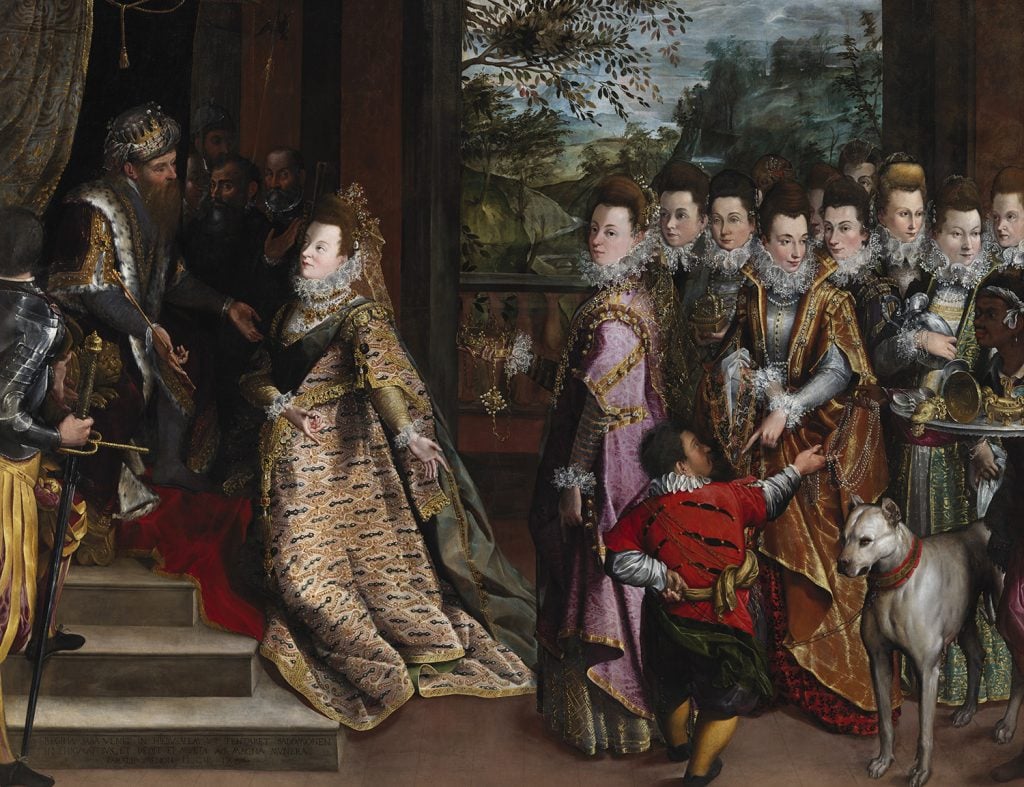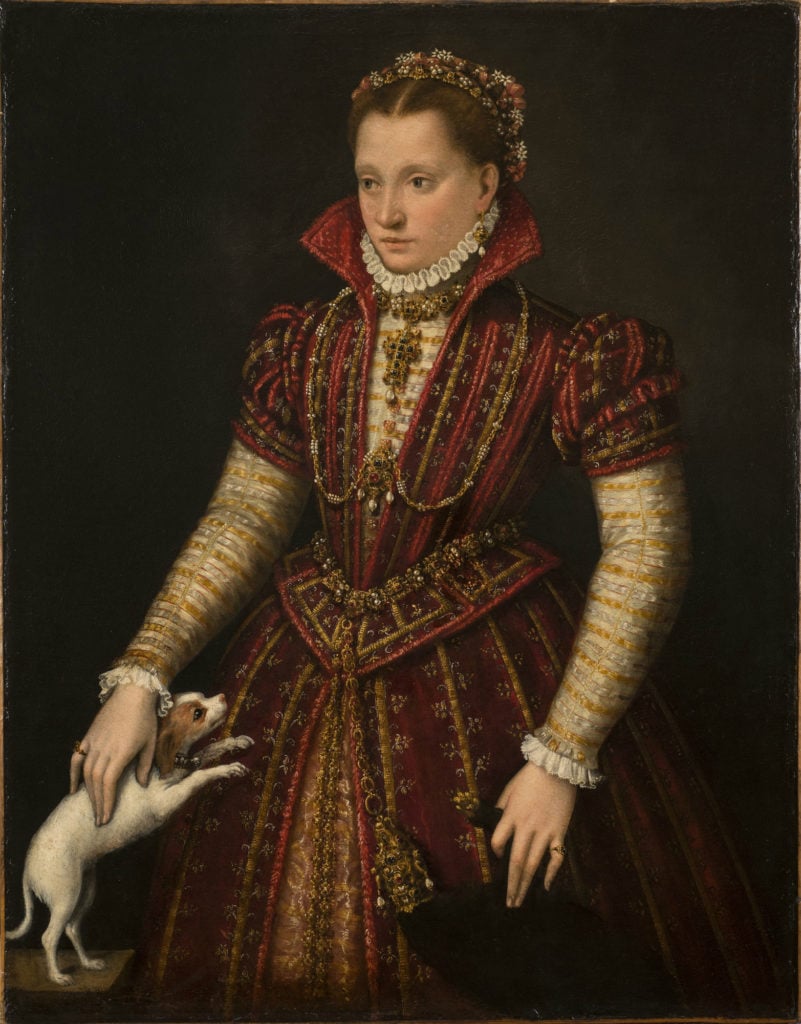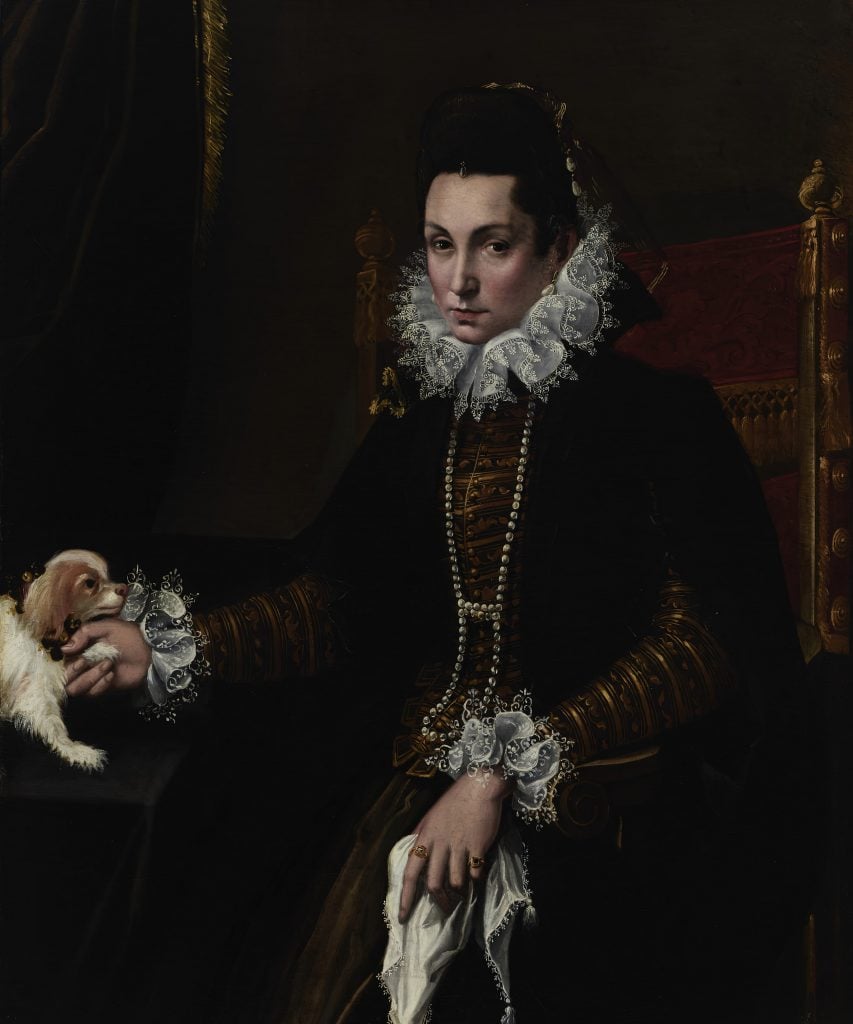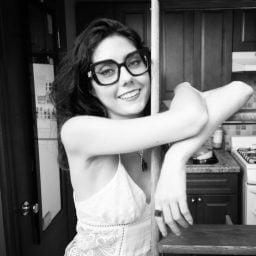Art World
Art Bites: What’s With All the Dogs in Lavinia Fontana’s Portraits?
Whether lap dogs or hunting breeds, canines are a motif throughout the painter’s oeuvre.

Lavinia Fontana definitely lived her best life. She defied gender norms to become the breadwinner of her family, she fielded numerous pleas for portraits from noblewomen, and she inserted dogs—a subject she obviously enjoyed—into many paintings throughout her four decades as Italy’s first female career artist. While art history can’t know for sure whether Fontana had a pup of her own, canines do prove a definite, lovable motif across many of the 130 paintings she produced.
Fontana’s family circumstances helped her participate in Italy’s art scene, to become the only woman in the Giulio Mancini’s Considerazioni sulla pittura (Considerations on Painting, which the art dealer and painter wrote in the early 1600s, but remained unpublished until 1956). Her father, Prospero, a notably fast painter who specialized in frescoes and taught at the School of Bologna, started training the young artist early on. Fontana’s first known painting dates to 1575. Two years later, she married Gian Paolo Zappi, who took care of chores and served as her agent. By 28, she earned a doctorate and launched her art career out of her father’s old studio.

Lavinia Fontana, Portrait of a Noblewoman (ca. 1580). Courtesy National Museum of Women in the Arts.
Italian society, particularly women, adored Fontana. Although the artist started off in devotional paintings and later tackled mythology, she’s perhaps best remembered as a portraitist. Records indicate that Fontana made a killing from commissions throughout the 1580s. She grew so close that sitters like the Duchess of Sora became godmothers and namesakes to her 11 children.
Fontana was favored both for her naturalism and her attention to detail. Her portraits served as status symbols. Sitters donned their finest garb and surrounded themselves in the trappings of wealth. Fontana even took their jewels to the studio for study. Rubies, diamonds, and spaniels were the hottest accessories at the time. The smaller the dog, the more expensive it was.
Her canines gained additional layers of meaning in different contexts. Another toy spaniel appears in Portrait Of Ginevra Aldrovandi Hercolani (ca. 1595), its paw in the hand of the work’s sullen sitter. Fontana painted this portrait while Hercolani mourned her husband’s death. Her dark clothes, ever-present handkerchief, and bleary eyes emphasize her virtuously intense grief, as does her fluffy, comforting little friend. Lap dogs, especially, symbolized feminine loyalty.

Lavinia Fontana, Portrait of Ginevra Aldrovandi Hercolani (ca. 1595). Photo: Heritage Art/Heritage Images via Getty Images.
Meanwhile, Portrait of an Adolescent Boy by a Desk, with a Dog (early 1590s) features a beagle peeking out from the orange tablecloth draped over this sitter’s desk, as a multifaceted symbol of boyish playfulness and burgeoning masculine maturity. Unlike spaniels, beagles were somewhat functional dogs used for hunting—like the mastiff that appears in The Visit of the Queen of Sheba to King Solomon (1599), which many consider Fontana’s most ambitious painting ever made. In 1872, it became the first work by a woman to enter the collection of the National Gallery of Ireland. Although the institution is currently at work conserving the expansive scene, it appeared in the museum’s 2023 show “Lavinia Fontana: Trailblazer, Rule Breaker”.
In conversation with The Art Newspaper, exhibition curator Aoife Brady pointed out that “functional” and “feminine” weren’t mutually exclusive to Fontana. The mastiff in Queen of Sheba is notably female, with visible teats. The only question left surrounding Fontana’s affinity for painting dogs comes down to the matter of which breed the artist herself would have kept.
What’s the deal with Leonardo’s harpsichord-viola? Why were Impressionists obsessed with the color purple? Art Bites brings you a surprising fact, lesser-known anecdote, or curious event from art history. These delightful nuggets shed light on the lives of famed artists and decode their practices, while adding new layers of intrigue to celebrated masterpieces.





